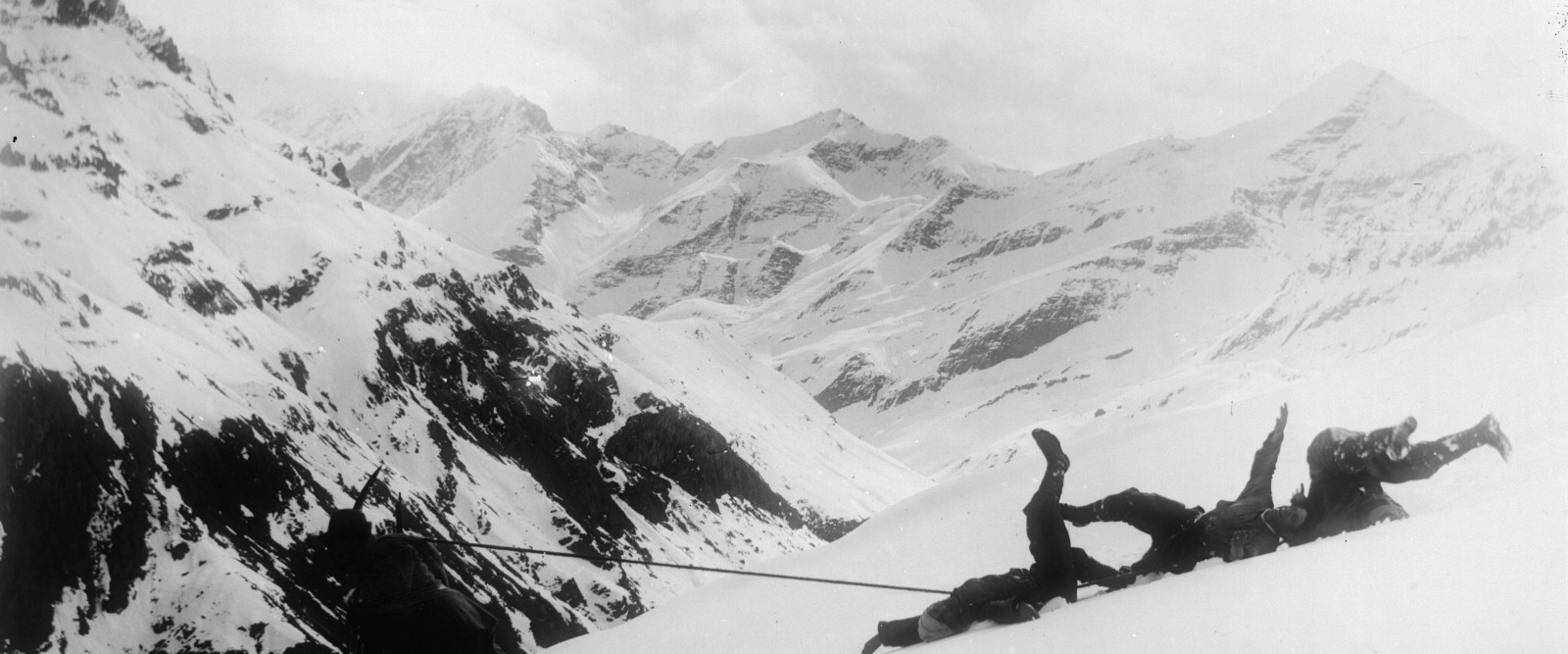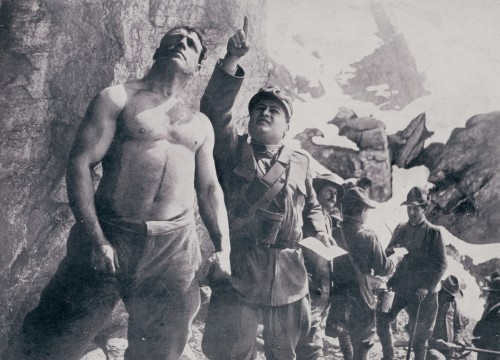From his first appearance in the legendary Cabiria (1915) the character of Maciste – played by Bartolomeo Pagano, previously a docker at the port of Genoa – obtained increasing success, leading him to face often improbable enemies, film after film: from Zorro to the Cyclopes, via the comedian Totò. They were not always memorable appearances, but in this varied film career Maciste alpino undoubtedly represents a fortunate exception. Maciste and his troupe, busy making a film in a small town on the border with Austria, are imprisoned by the Austrian guards, irritated by the enthusiasm with which they greet the news of Italy’s entry into the war. For Maciste it is an invitation to place his legendary force at the service of the weak: he frees his companions, defeats the Austrians and enrols in the Alpine troops to fight in the mountains
It would be simplistic to dismiss Maciste alpino as a propaganda film, given both its ability to include the violence of the war within comic episodes and the liveliness of a story still capable of making the audience laugh today. The copy screened is the fruit of restoration concluded in 2014 by the Venice Biennial and the Museo Nazionale del Cinema in Turin at the workshop L’Immagine Ritrovata in Bologna.
Directors
Luigi Maggi
Luigi Maggi was born in Turin in 1867. He began work as a typographer, at the same time cultivating his passion for the theatre. In 1906 he approached the world of film in various roles, as a producer, actor and director. In 1908 he made Gli ultimi giorni di Pompei, a masterpiece of the epic genre, which opened up the way for numerous films also achieving success abroad. Called up in 1915, he returned to filmmaking after his discharge, continuing until 1924. He died in Turin on 22 August 1946.
Luigi Romano Borgnetto
Luigi Romano Borgnetto was born in Turin in 1881. A painter by training, he was soon taken on in the world of film, first as a set designer, and then as a scriptwriter and director. In 1914 he was responsible for the set design of Cabiria, in which Maciste appeared for the first time, subsequently becoming the protagonist of numerous films directed by Borgnetto: Maciste (1915), Maciste bersagliere (1916), Maciste innamorato (1919), Maciste contro la morte (1920). In 1922 he made Maciste e la figlia del re dell'argento for a German production company, with which he was also to make his last feature film, Maciste und der Sträfling Nr. 51 (1923).
Gallery
Trento Film Map



